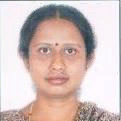International Journal of Image, Graphics and Signal Processing (IJIGSP)
IJIGSP Vol. 11, No. 2, 8 Feb. 2019
Cover page and Table of Contents: PDF (size: 850KB)
An Automated Detection of CAD Using the Method of Signal Decomposition and Non Linear Entropy Using Heart Signals
Full Text (PDF, 850KB), PP.30-39
Views: 0 Downloads: 0
Author(s)
Index Terms
Coronary artery disease (CAD), Flexible Analytic Wavelet Transform (FAWT), Linear support vector machine (LSVM), Correlation entropy
Abstract
The Coronary Artery Disease (CAD) which is one among the major class of cardiovascular diseases is emerging as an epidemic in the society and has proven to be the leading cause for more number of deaths when compared to the other cardiovascular diseases. It is emerging as one of the threats to the economy. It has become very important to detect CAD in its early stage which can help society in a broader way by saving a significant number of lives. The proposed method is a novel efficient automated approach which is capable of detecting CAD among the large group of patients using Electrocardiogram (ECG) signal. The system design provides a complete model of pre-processing of ECG, finding the heart rate which is further decomposed up to 4 level sub-bands using analytic transformation based signal decomposition method. The signal decomposition method is used to analyze the low frequency components of the signal and to deal with non stationary nature of heart signals. Two Non-linear entropy estimators as K-Nearest Neighbor (K-NN) and Correlation entropy are applied to decomposed sub- bands obtained after applying Analytic wavelet transformation based flexible decomposition technique to extract non-linear dynamics. The clinical significant features from the large data set can be selected by employing wilcoxon ranking method which assigns ranks on the applied signal. Further, an entropy-based classification approach and a suitable classifier namely Linear support vector machine (L-SVM) is used to classify among CAD and normal class. The algorithm is simulated in MATLAB and it is found that the results matched closely with the available data. This computer-assisted automated system which characterizes the heart signal can serve as an aid for the cardiologists in their daily screening of a large number of patients and can be used in primary health care centers which help the physicians in the early detection of a CAD.
Cite This Paper
Padmavathi C, Veenadevi S.V, "An Automated Detection of CAD Using the Method of Signal Decomposition and Non Linear Entropy Using Heart Signals", International Journal of Image, Graphics and Signal Processing(IJIGSP), Vol.11, No.2, pp. 30-39, 2019. DOI: 10.5815/ijigsp.2019.02.04
Reference
[1]N.D. Wong, “Epidemiological studies of Coronary Heart Diseases and the evolution of preventive cardiology,” Nature Reviews Cardiology, vol. 11, pp. 276-289, April 2014.
[2]National Heart, Lung and Blood Institute, what is coronary heart disease? http”//www.nhlbi.nih.gov/health/health-topics/pics/cad/, 2015.
[3]U. Donna Giria and Rajendra Acharya, “Automated diagnosis of Coronary Artery Diseases affected patients using Linear Discriminant Analysis, Principal Component Analysis, Independent Component Analysis and Discrete Wavelet Transform,” Elsevier, pp. 274-282, 2013.
[4]U.R. Acharya and N. Kannathal, “Comprehensive analysis of cardiac health using heart rate signals,” Institute of Physics and Engineering in Medicine, vol.25, pp. 1139-1151, 2004.
[5]U.R. Acharya, P.S. Bhat, N. Kannathal, A. Rao and C.M. Lim, “Analysis of cardiac health using fractal dimension and wavelet transformation,” Elsevier, vol.26, pp. 133-139, 2005.
[6]Karolis Antanavičius, et al., “Nonlinear dynamics analysis of electrocardiograms for detection of coronary artery disease,” US National Library of Medicine, vol.92, pp.198-204, 2008.
[7]K. Karamanos, S. Nikolopoulos, K. Hizanidis, G. Manis, A. Alexandridi and S. Nikolakeas, “Block entropy analysis of heart rate variability signals,” International Journal of Bifurcation and Chaos, vol.16, pp. 2093-2101, 2006.
[8]K.C. Chua, V. Chandran and C.M. Lim, “Cardiac state diagnosis using high order spectra of heart rate variability,” Journal of Medical Engineering and Technology, vol.32, pp. 145-155, March/April 2008
[9]Ismail Babaoglu , Oguz Fındık , Mehmet Bayrak,“ Effects of principle component analysis on assessment of coronary artery diseases using support vector machine”, ELSEVIER, Expert Systems with Applications,Vol. 37,pp. 2182–2185,2010.
[10]A. Mohit Kumar and Ram Bilas Pachori, “An efficient automated technique for CAD diagnosis using flexible analytic wavelet transform and entropy features extracted from HRV signals,” Elsevier, Expert Systems with Applications, vol. 63, pp. 165-172, 2016.
[11]I. Bayram, “ An analytic wavelet transform with a flexible time- frequency covering ,” IEEE Transl. Signal processing, vol. 61(5), pp. 1131-1142, 2013.
[12]Xian du, Vinitha sree subbhuraam, “ Novel classification of coronary artery disease using Heart rate Variability analysis”, Journal of Mechanics in Medicine and Biology , Vol. 12, No. 4, 2012 .
[13]S. Sood , M. Kumar, Ram Bilas Pachori and U. R. Acharya, “Application of empirical mode decomposition-based features for analysis of normal and CAD heart rate signals,” Journal of Mechanics in Medicine of Preventive and Biology, vol.16 (1), 2016.
[14]K.A. Veselkov, V.I. Pahomov, J.C. Lindon, V.S. Volynkin, D. Crockford, G.S. Osipenko and J.K. Nicholson, “A metabolic entropy approach for measurements of systemic metabolic disruptions in patho- physiological states,” Journal of Proteome Research, vol. 9 (7), pp. 3537–3544, 2010.
[15]Ji, L. , Li, P. , Liu, C. , Wang, X. , Yang, J. , & Liu, C. ,“ Measuring electromechanical coupling in patients with coronary artery disease and healthy subjects”., Entropy, 18 (4), 153 , 2016
[16]U.R. Acharya, O. Faust, V. Sree, G. Swapna, R.J. Martis, N.A. Kadri and J.S. Suri, “ Linear and Non Linear analysis of normal and CAD affected heart rate signals,” Elsevier, Computer Methods and Programs in Biomedicine, vol.113, pp. 55-68, 2014.
[17]C. Zhang C, B. Li , B. Chen, H. Cao, Y. Zi and Z. He, “Weak fault signature extraction of rotating machinery using flexible analytic wavelet transform mechanical Systems and Signal Processing,” vol. 64-65, pp. 162-187, 2015.
[18]Ahmad Taher Azar and Shaimaa Ahmed El-Said, “Performance analysis of support vector machines classifiers in breast cancer mammography recognition”, Springer-Verlag London, Vol.24, pp.1163-1177, 2014.

